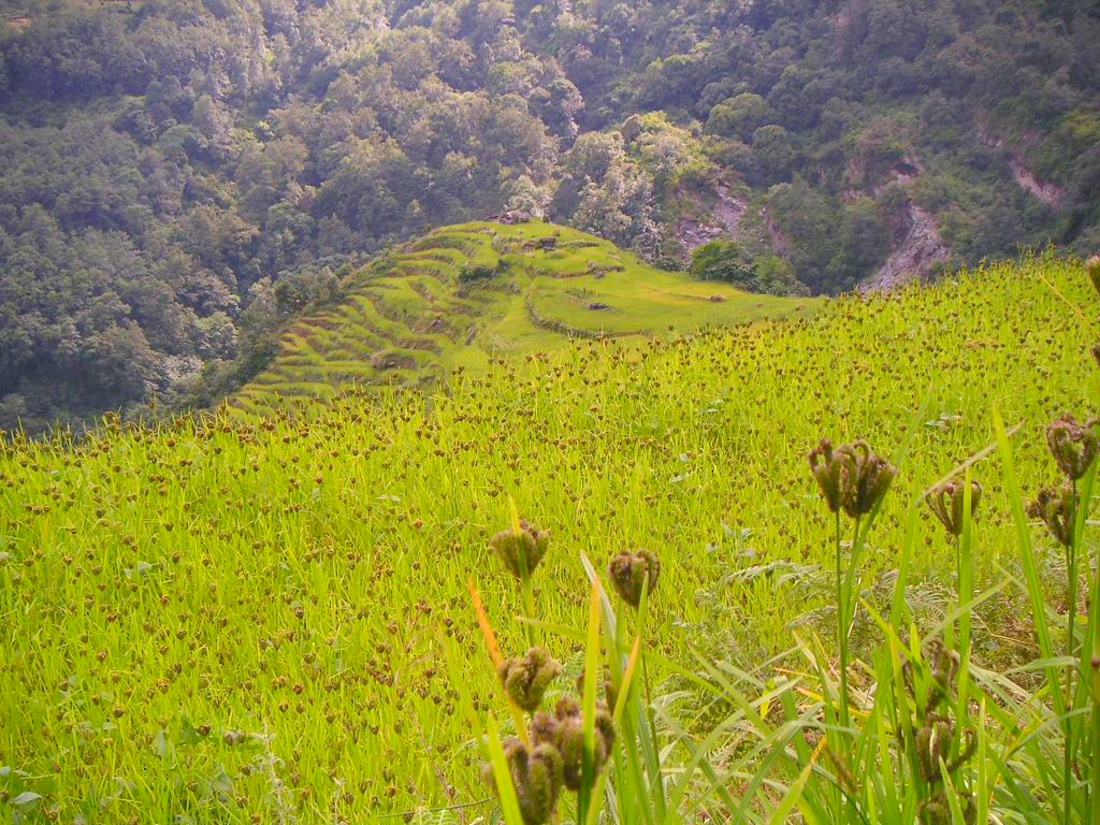Top Qs
Timeline
Chat
Perspective
Chloridoideae
Subfamily of plants From Wikipedia, the free encyclopedia
Remove ads
Chloridoideae is one of the largest subfamilies of grasses, with roughly 150 genera and 1,600 species, mainly found in arid tropical or subtropical grasslands. Within the PACMAD clade, their sister group is the Danthonioideae.[1] The subfamily includes widespread weeds such as Bermuda grass (Cynodon dactylon), goosegrass (Eleusine indica) or finger grass (Chloris), but also millet species grown in some tropical regions, namely finger millet (Eleusine coracana) and teff (Eragrostis tef).
With the exception of some species in Ellisochloa and Eleusine indica, most of the subfamily's species use the C4 photosynthetic pathway[citation needed]. The first evolutionary transition from C3 to C4 photosynthesis in the grasses probably occurred in this subfamily, around 32 to 25 million years ago in the Oligocene.[2]
Remove ads
Phylogeny
Relationships of tribes in the Chloridoideae according to a 2017 phylogenetic classification, also showing the Danthonioideae as sister group:[3]
| Chloridoideae | |
The following genera have not been assigned to a tribe:[3]
Remove ads
References
Wikiwand - on
Seamless Wikipedia browsing. On steroids.
Remove ads

